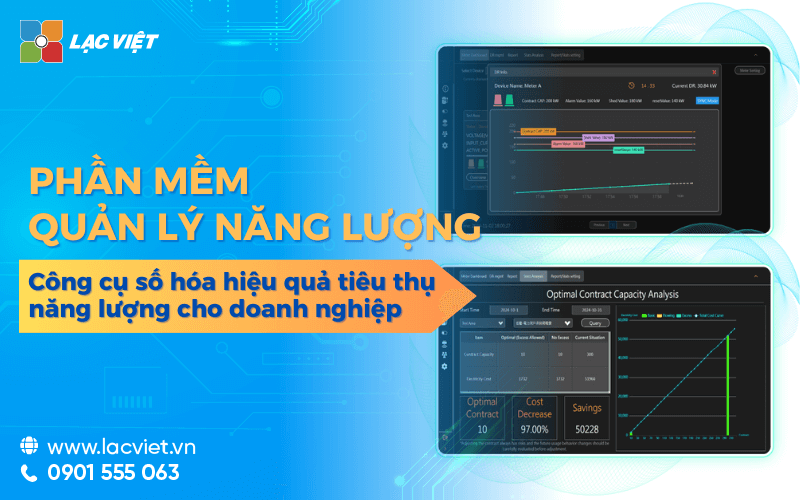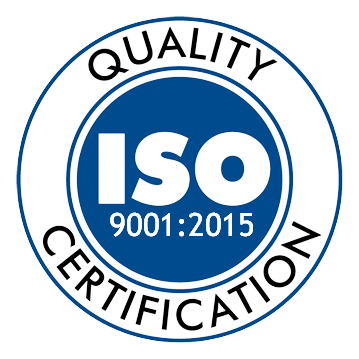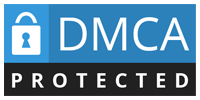Many businesses have yet to clearly visualize: measuring greenhouse gas emissions, what is, how to do it, it should start from where data are consistent with the current resources or not? This article Lac Viet Computing will help you solve the problem that from the concept, benefits, methods of measurement, to the tools that support efficient so you can be proactive in cruise control emissions raise the prestigious environment of business.
Why measure the amount of greenhouse gas emissions is a critical issue for businesses today?
In the past decade, “reducing greenhouse gas emissions” is no longer committed to their own country, which has become the key criterion in production operations – business of the business. From the multi-national corporations to the company in the country, the wave of green transformation is creating a new standard: enterprise wants to survive long-term development to understand – control – and reduce emissions on their own.
Many global supply chains at present, particularly in the fields of textile, electronics, food, logistics... requires provider transparency emissions from product, operation, transportation. If the business can't be measured emissions, they almost knocked out of play, not because of poor quality but because of the lack of transparency environment.
Not only that, factors such as:
- Pressure from investors on reporting ESG,
- Roadmap to Net Zero national
- Or mechanism to price carbon is about to be applied (CBAM from the European carbon market, Vietnam...)
... are making the measurement of greenhouse gas emissions become mandatory steps first if the business wants to adapt, survive direction to sustainable growth.
And as an unchanging principles in management: “You can't manage what you can't measure.” Therefore, the measured emission is not only responsible but also the opportunity for businesses to proactively control costs, optimal construction, operation prestigious environment in the long term.
- Greenhouse gas emissions, what is? Causes, effects and solutions to reduce emissions towards Net Zero by 2050
- Emissions are what? The solution to reduce emissions towards Net Zero by 2050
- Guide reports on greenhouse gas inventory for business 2025
- Greenhouse gas inventory as specified how? Guide implementation process
1. Overview of measuring the amount of greenhouse gas emissions
1.1. Measure the amount of greenhouse gas emissions, what is?
Measure the amount of greenhouse gas emissions is the process of identifying and calculate the total amount of greenhouse gas (GHG – Greenhouse Gases) that the business incurred in the production process, transport, operate the supply chain. The type of gas this if not controlled will accumulate in the atmosphere causing global warming, climate change.
The measured emission can be done through the:
- Recorded directly from the measuring device (such as sensor CO₂),
- Or indirectly, by collecting the input data (for example, electricity consumption, fuel used, the number of kilometers shipping...) and then multiplied by the emission standard.
1.2. The greenhouse gases popular need to measure
There are many greenhouse gases, but the most popular have the biggest impact in business operations include:
- CO₂ (Carbon Dioxide): accounted for the largest proportion, arising from the burning of fossil fuels (gas, oil, gas, coal...), cement production, electricity and heat.
- CH₄ (Methane): arising from livestock, waste disposal, gas leak.
- N₂O (Nitrous Oxide): emissions in agriculture, chemical and combustion processes.
- HFCs, PFCs, SF₆: is the gas industry has the ability to retain heat very strong, often have in refrigeration equipment, electronic, or manufacturing process peculiarities.
All of this gas is conversion of CO₂ equivalent (CO₂e) to businesses to track, compare reports.
1.3. Standard measurement of emissions (Scope 1, 2, 3)
According to the GHG Protocol – standard measurement emissions, world's most popular, greenhouse gas emissions are divided into 3 main groups:
- Scope 1: emissions directly from the activities that business control (such as burning fuel in the boiler, a transport vehicle owned business...)
- Scope 2: emissions indirectly from electricity, heat or steam purchased from outside, but use in business.
- Scope 3: emissions indirectly other from the entire value chain, such as transportation party Tuesday, go back to the product post-consumer waste products from supplier...
Properly understood, properly categorized 3 scope will help the business didn't miss a major emissions sources in order to plan mitigation in accordance with the practice activities.
2. 3 Methods of measuring greenhouse gas emissions
Measuring greenhouse gas emissions can be done by several methods, depending on the scale, the level of accuracy required and the technological capabilities of each business. The clear distinction between these methods not only help in choosing the right tool, but also ensure the data obtained has high reliability, good service for reporting purposes, audit, or building strategies Net Zero.
2.1 direct Measurement: accuracy, but the high cost, in accordance with major emissions sources or sensitive
This method uses the measurement device for professional use, such as sensor CO₂, mass flow meter, gas analyzer exhaust gas in the exhaust pipe... to acknowledge the concentration or the volume of greenhouse gases arising at the point of emission.
For example: Business, mounting sensor CO₂ in the chimney of the boiler to keep track of emissions in each hour. Or use equipment emission analysis to determine the content of CH₄ from landfill, water treatment system, waste.
Advantages:
- For accurate results, real-time is particularly useful with the industry, there are large emitters continuously as production of steel, cement, chemicals...
- Suitable for business that requires monitoring environmental strict or need data in accordance with the law.
Restrictions:
- High investment costs (equipment, maintenance, calibration, periodic)
- Not feasible with the source emission dispersion retail or inaccessible to in situ measurement.
2.2 Measured indirectly: Practical, flexible, with the majority of businesses today
This is a popular method at the first step when businesses do not have measurement systems in full. Instead of measuring gas is emitted, the business will collect activity data such as fuel usage, power consumption, number of km of transportation, the volume of goods... Then apply the emission corresponding to calculate the amount of greenhouse gases arise.
For example:
- A business consumption of 5000 kWh of electricity per month. Apply the emission of monre (0,9131 kg CO₂e/kWh), the total emissions from electricity is about 4.565 kg CO₂e/year.
- Company car running 10,000 km oil FREE, with coefficients 0,267 kg CO₂e/km → emission corresponding 2.670 kg CO₂e.
Advantages:
- Flexible easy-to-deploy with all types of businesses, especially in the service sector, trade, logistics.
- Leverage available data such as bills, electric bills, gas, oil, diary operate, no need to invest in equipment.
Restrictions:
- Depends on the accuracy of input data and coefficients apply.
- 't reflect the fluctuations in emission to the fact at each point of time as measured directly.
2.3 Calculation by a factor of emissions: Methods suitable foundation for planning and reporting overall
This is the expanded form of the measured indirectly, when businesses use the table emission factors published by the prestigious organizations as:
- GHG Protocol (global popularity),
- IPCC (Committee intergovernmental panel on climate change),
- DEFRA (United kingdom),
- EPA (United States),
- Or Ministry of natural resources and Environment of Vietnam.
These coefficients indicate: 1 unit specific activity (for example: 1 liter of gasoline, 1 ton of coal, 1 kWh of electricity...) will arise how many kg or tons CO₂e equivalent.
Advantages:
- Standardized and accepted in the international report, ESG, ISO 14064
- Suitable for planning, building baseline emissions track the trend of gradual reduction over time.
Restrictions:
- Not accurately reflect the level of emissions of the fact if the business use technology characteristics or operating conditions not standard.
- Need to understand to correctly select the corresponding coefficients, avoid applying the wrong data source.
3. Process of measuring the amount of greenhouse gas emissions in business
The measurement of greenhouse gas emissions is not merely a mathematical calculation that is a process of management sciences help businesses understand the “carbon footprint” of its own, from which facility to reduce emissions in an efficient way. Here are 5 important steps in the process of measuring greenhouse gas emissions, according to international standards (GHG Protocol and ISO 14064) suit every type of business:
3.1. Determine the range of source emissions (Scope 1, 2, 3)
First, enterprises need to determine which activities in the chain operate to have arisen greenhouse gas emissions. This not only helps avoid missing important data, but also ensure the measurement result emission is transparent can be compared to international standards.
- Scope 1: emissions directly from the operation of corporate control such as burning fuel in the boiler, truck company use gas leakage from the refrigeration equipment.
- Scope 2: emissions indirectly from energy purchased outside as electricity, steam, hot water... be used in operation.
- Scope 3: emissions indirectly extend from activity't do business directly control, but related to the value chain: shipping outsource products, post-consumer waste and go back to work, consumer supplies,...
3.2. Collect activity data
After defining the scope, business needs to collect the actual data are related to activity, energy expenditure, or arising greenhouse gases. The group common data include:
- Fuel used: gasoline, oil, gas, coal, biomass...
- Power consumption: from the grid or suppliers
- Shipping data: distance, type of vehicle, number of trips
- Input materials: paper, plastic materials that are sources of emissions in production
- Waste, water waste: volume arises, processing method
- Logistics operations, commuting to work remotely (if applicable Scope 3)
Note: If the business is not yet available system data collection should start from the most accessible source such as electricity bills, vouchers, fuel reports, operating machinery, log shipping...
3.3. Apply the emission standard
Each type of activity will correspond to a coefficient of emission specific, embodied energy and greenhouse gas (in CO₂e) was born on per unit of consumption. Businesses do not need to calculate the coefficient of which can use the emission has been published by:
- GHG Protocol – instructions for measuring emissions popular global
- IPCC (the intergovernmental panel on Climate change) provides coefficients by industry, type of fuel
- DEFRA (Uk), EPA (Usa) for the business of export to EU, US
- Ministry of natural resources and Environment of Vietnam apply in environmental reporting in the country
For example: Burning 1 liter of oil generates about 2,67 kg CO₂e. If the business user to 5,000 liters/month, separate from the fuel has arisen about 13.350 kg CO₂e/year.
3.4. Calculate the amount of emissions equivalent CO₂ (CO₂e)
Collected data and emission factors will be used to calculate the amount of greenhouse gas emissions, conversion of units CO₂e (carbon dioxide equivalent) is the unit of general to accrue, then compare various gases (CO₂, CH₄, N₂O...).
Basic recipe:
Emissions CO₂e = Active consumption × emission factors
Business can be calculated according to each activity, each region, each department or pooled by month, quarter or year depending on the reporting needs.
3.5. Analysis result, plan to reduce emissions
The last step, and is also a core objective of measuring greenhouse gas emissions is to use the results to build the roadmap to reduce emissions accordingly. Based on the data you have calculated, the business should answer the questions:
- Parts are emissions the most?
- There are activities that cause emissions, but can replace or optimal?
- Costs arising from emissions this is how much (for example: if the price of carbon)?
- Roadmap to reduce emissions by year – quarter – target Net Zero how?
The actual value here is business not only to know yourself emissions how much that knew emissions from nowhere, science-based to minimize an effective way, can prove to partner or audit ESG.
4. The tools and methods to support measuring the emission efficiency
The measurement of greenhouse gas emissions will become easier, more accurate, if the business is choosing the right tool method. Instead of processing data, the software system can automate most of the calculation steps help save time, reduce errors and improve the reliability of the report.
4.1. Software calculate emissions, automatic data integration operation
The software is “assistant number” to help businesses:
- Automatically collect data consumption of electricity, water, fuel from the operating system available.
- Apply the emission corresponding to calculate the amount of CO₂e according to each activity.
- Classification emissions under Scope 1, 2, 3.
- Export reports in standard format such as the GHG Protocol and ISO 14064 or table general service report ESG.
Actual value: a significant Reduction in computational time, to avoid confusion, craft, create database consistency to serve auditing or international partners.
4.2. The emission standard: from monre, GHG Protocol, DEFRA, IPCC
The emission is the base to convert the consumption activities (such as burning 1 liter of oil, use 1 kWh of electricity) of emissions CO₂e respectively.
- In the country: the Ministry of natural resources & Environment issued the emission by each type of fuel, in accordance with Vietnamese enterprises.
- International: can refer to the GHG Protocol (global), IPCC (climate science), DEFRA (for Uk market), EPA (for American market).
Note: Selection coefficient in accordance with the purposes of reporting (internal ESG, exports) help to increase transparency, reduce the risk evaluation is not standardized.
4.3. Model measuring emissions in manufacturing, logistics, office
- Manufacturing enterprise: Should start from the source of emissions directly as boiler, lift trucks, combustion equipment fuel; then expanding Scope 2 (electricity grid) and Scope 3 (supply and transportation).
- Logistics: Focus on fuel for the vehicle, outsource, goods transport, international and domestic.
- Office services: Power consumption, air conditioning, print, work, travel internal waste office is the source emission popular.
Value: determining the right model to help businesses don't measure cute, also not “overload” when the measurement exceeds the actual demand.
4.4. The popular platform support reporting GHG, ISO 14064, CDP
- GHG Protocol Toolkits: a free, easy to reach with many forms Excel has integrated system number.
- ISO 14064 Reporting Templates: match the business needs certification according to the system of environmental management.
- CDP Platform (Carbon Disclosure Project): for large businesses have the goal to publish information global emissions.
Benefits: Standardized reporting, increase credibility, the ability to reach international markets, especially in procurement, investment or cooperation in the supply chain.
5. Any business should prioritize implementing measure emissions today?
Not all businesses are the need to measure greenhouse gas emissions at the same time and in the same way. However, a number of groups, businesses should prioritize deployment as soon as possible to welcome the tendency to decrease the risk of action.
- Business directory, work with partner, FDI
Many big markets such as EU, America, Japan requires transparency about emissions in the supply chain. If the business can't provide data emission, reliable, risk is excluded from the list of supplier is completely true.
Measuring emissions from early help businesses proactively meet the requirements of customers, big, maintaining contracts increase the possibility of market expansion.
- Manufacturing enterprises have large energy consumption, emissions
Industries such as cement, steel, chemical, wood processing, food, textile... usually emission directly from the boiler, combustion fuel, or indirectly, from high power. This is the group “carbon footprint” in need of strict management.
Not only to report that the measured emission also helps to detect the areas to drain from which the solution cost savings, improved operational efficiency.
- Businesses within the supply chain to report emissions for partner
Although no emission lot, but if it is a supply for large corporations or businesses listed, the measured emissions are required in the profile reviews.
Value: Not in the chain, increase credibility in the role of a trusted partner and can demonstrate competence environment through real-world data.
- Business has the goal ESG, prepare listing, call capital
Investors now increasingly interested in risk non-financial especially effective management of emissions and roadmap to Net Zero. Businesses have clear data will have the advantage in the appraisal, was more highly about the level of sustainability.
Specific benefits: Cause positive impression in the round capital, IPO or review project finance international.
6. Hint support solution measures the amount of greenhouse gas emissions from Vietnam
6.1. Monitoring software – calculated emission automatically from data, real consumption
Software solutions by Lac Viet developed to help businesses move from how to measure greenhouse gas emissions from manual to model completely automated. Instead of collecting data from multiple parts and then import manually into a spreadsheet, the software can connect directly with the measuring device (meter, fuel meter sensor, exhaust gas...) or receive data periodically from the operating system.
Based on the data obtained, the software will:
- Apply the emission standard
- Conversion of units CO₂e,
- Automatic analysis according to each source (boiler, vehicles, machines, etc.).
Values bring: Reduce errors, save time, ensure accuracy, help in business decisions more quickly in the management of emissions.
6.2. Support sorting Scope 1-2-3 and reported according to standard GHG Protocol
The classification of sources of emissions in Scope is required if business want to report ESG or participate in tenders in the international supply chain. Software Lac Viet is designed to:
- Automatically group data emissions under Scope 1 (direct), Scope 2 (indirect, from power, energy), Scope 3 (value chain),
- Allows users to additional extended data (for example: the cost of logistics, purchasing from suppliers, partners).
From there, the software creates reports the correct structure GHG Protocol is a standard popular global is large corporations and institutions audit accepted.To help businesses easily demonstrate environmental responsibility, active in the preparation of project profile, reporting ESG or the target to reduce emissions has been committed.
6.3. Integrated metering data directly with the operating system of the business
Another strong point of the solution Lac Viet is the ability to connect with management system such existing ERP measurement system, SCADA software, accounting software, internal or system logistics. This helps minimize the data entry manually, increasing the rate of synthesis data, ensuring consistency across the entire organization.
For example:
- Fuel data from the storage system is automatically transferred to the software emissions.
- The amount of electricity consumed each region is collected directly from the measuring device and assigned to the cost center, respectively.
Help reduce the burden on the team operating and accounting at the same time enterprises are always available data emission updates, no need to wait until the final calculation.
6.4. In accordance with the business manufacturing, logistics, commercial, service
Other than some international platform high-cost scale complex software Lac Viet is developed under the direction of flexibility, ease of deployment in accordance with the characteristics of operation in Vietnam.
- Manufacturing enterprise: track emissions from machinery, boilers, equipment power consumption/fuel.
- Business logistics: Calculate CO₂e from operation, transportation, storage, operating warehouse.
- Business services, trade: monitoring emissions from consumption of electricity, air conditioning, move, work, waste.
Businesses do not need to change the infrastructure or processes, just install and sync with data available that can begin to manage emissions in an efficient way.
The measurement of greenhouse gas emissions not only the requirements of the international organization which is also the key to help enterprises control operational risk, optimize energy costs and demonstrate commitment to the environment in a way actually.
Whether large scale or small, manufacturing or service, the business can completely start from simple steps: collect consumption data, using the emission standard, step by step form system, emission monitoring in accordance with the characteristics of his. Journey to Net Zero does not begin with the slogan that a step accurately measure the transparency first.













